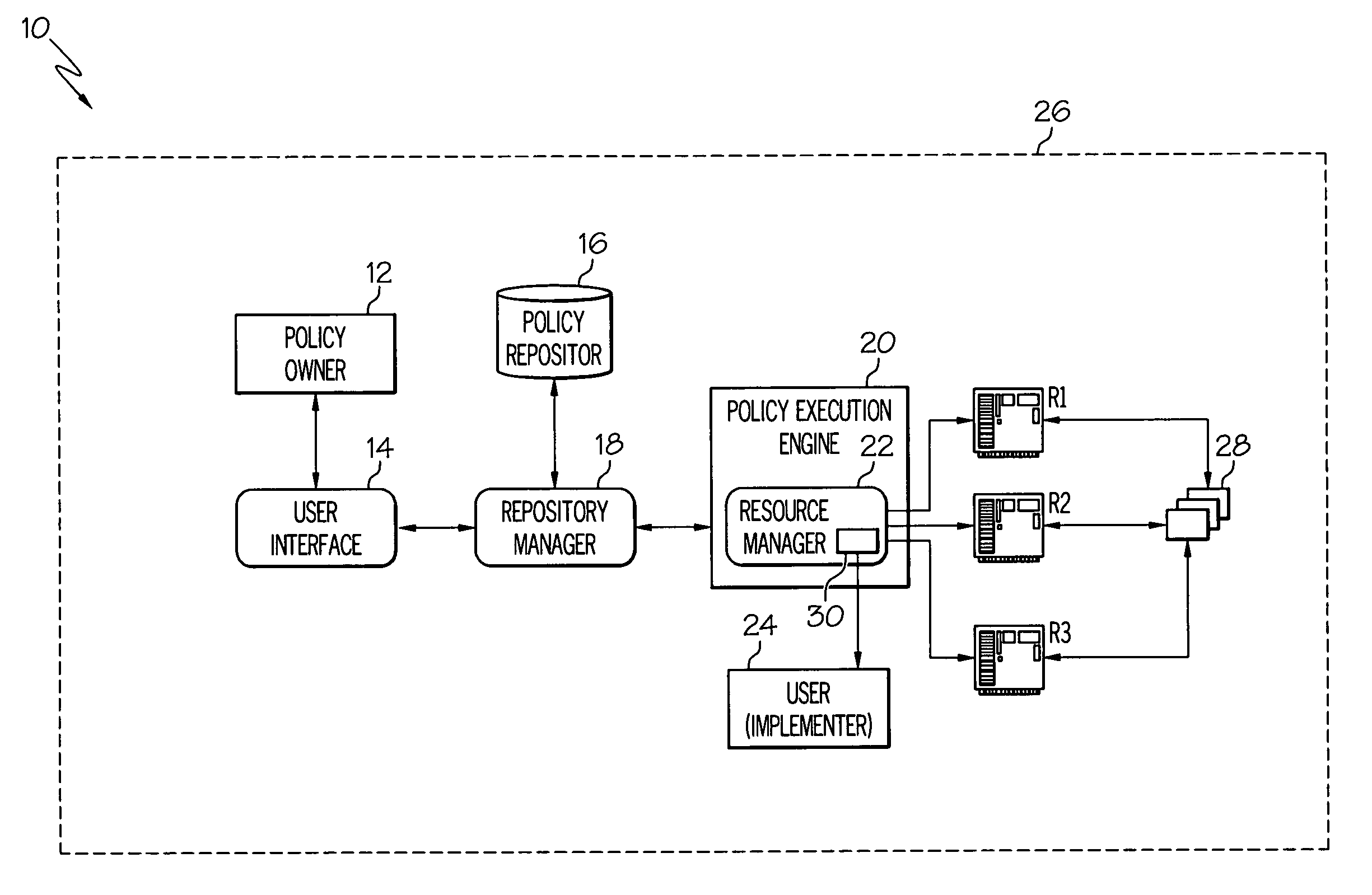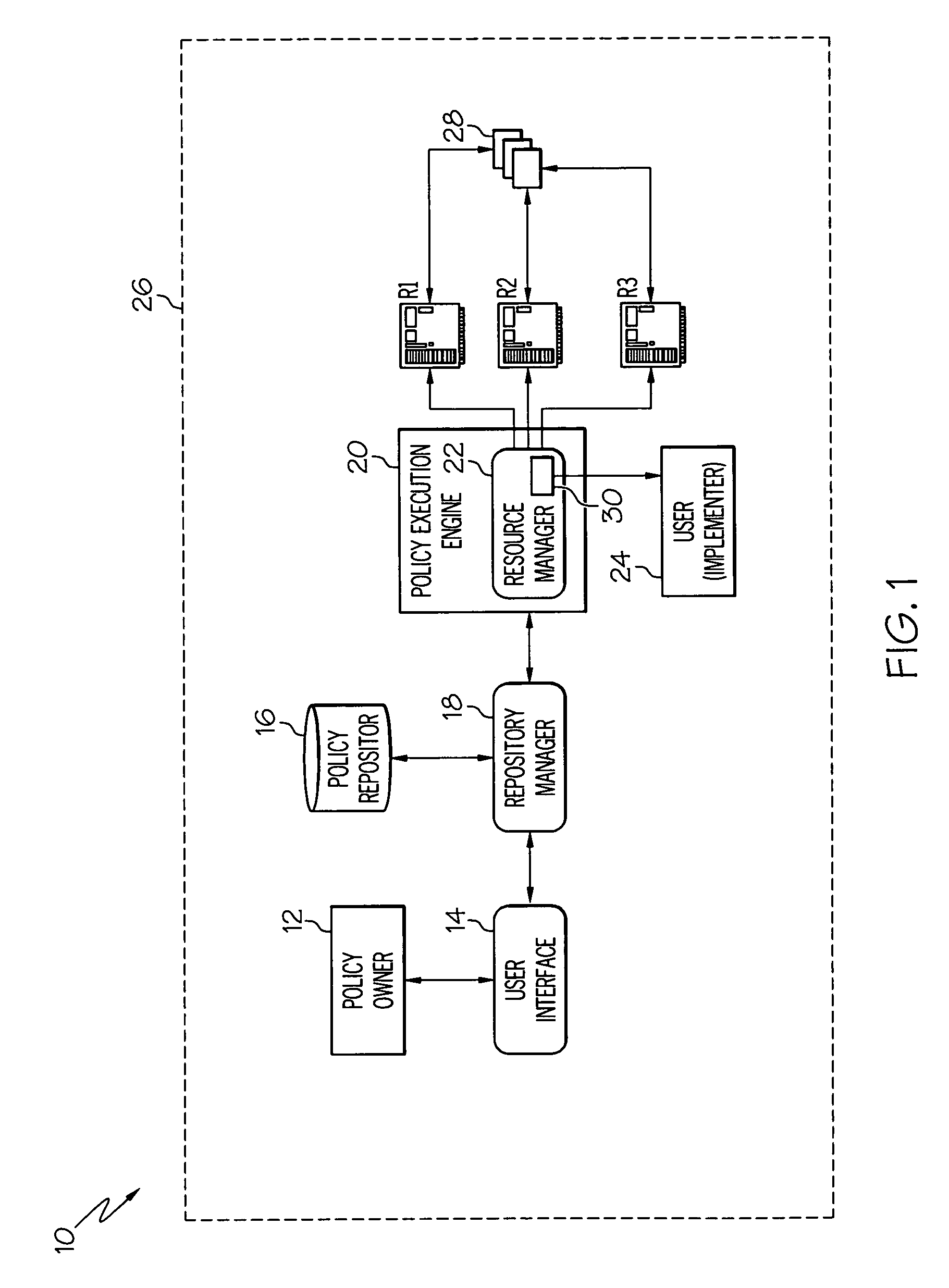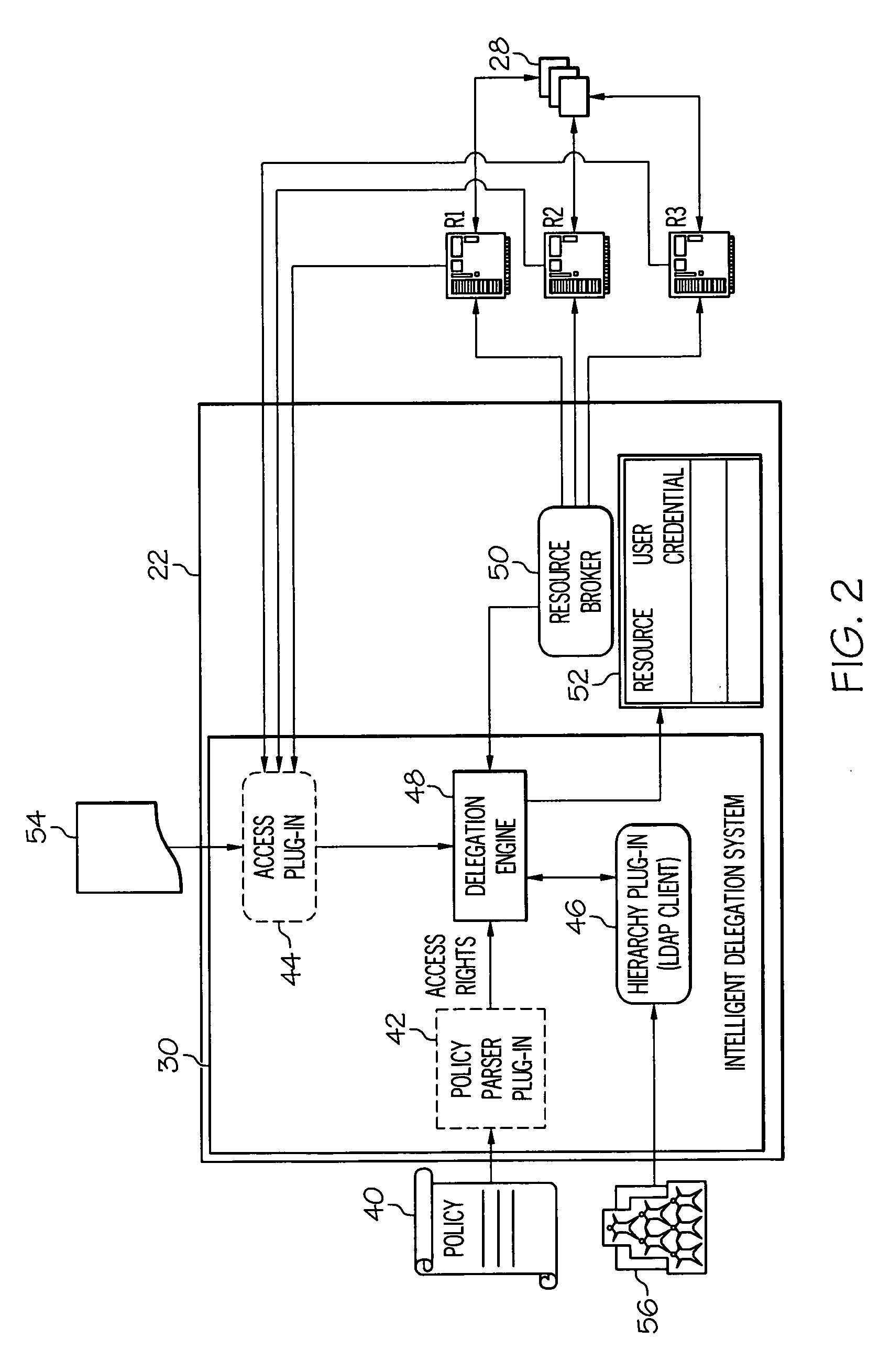Policy implementation delegation
a technology for implementing policies and delegation, applied in the field of policy implementation delegation, can solve problems such as difficult task of finding the right person, unable to access the system, and neither the policy owner nor the domain expert might have access to the system
- Summary
- Abstract
- Description
- Claims
- Application Information
AI Technical Summary
Benefits of technology
Problems solved by technology
Method used
Image
Examples
example 1
ILLUSTRATIVE EXAMPLE 1
Implicit Delegation
[0047] The following illustrative example outlines a typical procedure implemented by the present invention in an implicit delegation case. In this case (as with explicit delegation), resource manager 22 is configured with the credentials of the possible implementers. Delegation engine 48 will receive input from policy parser plug-in 42, access plug-in 44 and optionally hierarchy plug-in 46. Assume that LA1 comprises the list of access rights 54 necessary to implement policy 40 as determined by policy parser plug-in 42. Using access plug-in 44, the set or list of users (S1) having the necessary access rights mentioned in LA1 can be identified. From the policy owner and resource indicated in the policy, IDS 30 can create LDAP filter and use hierarchy plug-in 46 (e.g., an LDAP client) to determine who among set of users S1 is permitted to implement (i.e., can be delegated) the policy 40. In this example, such users are referred to as set of us...
example 2
ILLUSTRATIVE EXAMPLE 2
Semi-Implicit Delegation
[0049] In semi-implicit delegation, IDS 30 uses the policy parser plug-in to determine the minimum set of access rights required to execute policy 40. Similar to Example 1, IDS 30 may or may not use hierarchy plug-in 46 to identify out the set of users to which the owner can delegate implementation of policy 40. This depends on the configuration used for delegation. In any event, delegation engine 48 will use access plug-in 44 to identify the set of users S1 who have the access rights returned by policy parser plug-in 42, and optionally, also who among set S1 have a desired hierarchical relationship to the owner of policy 40. This information is returned to the owner who will select the most appropriate policy implementer. Once a user has been selected as implementer (and optionally consented), the ID of that user can be associated with the applicable resource and / or policy 40 in table 52, and the user can be manually identified in poli...
PUM
 Login to View More
Login to View More Abstract
Description
Claims
Application Information
 Login to View More
Login to View More - R&D
- Intellectual Property
- Life Sciences
- Materials
- Tech Scout
- Unparalleled Data Quality
- Higher Quality Content
- 60% Fewer Hallucinations
Browse by: Latest US Patents, China's latest patents, Technical Efficacy Thesaurus, Application Domain, Technology Topic, Popular Technical Reports.
© 2025 PatSnap. All rights reserved.Legal|Privacy policy|Modern Slavery Act Transparency Statement|Sitemap|About US| Contact US: help@patsnap.com



